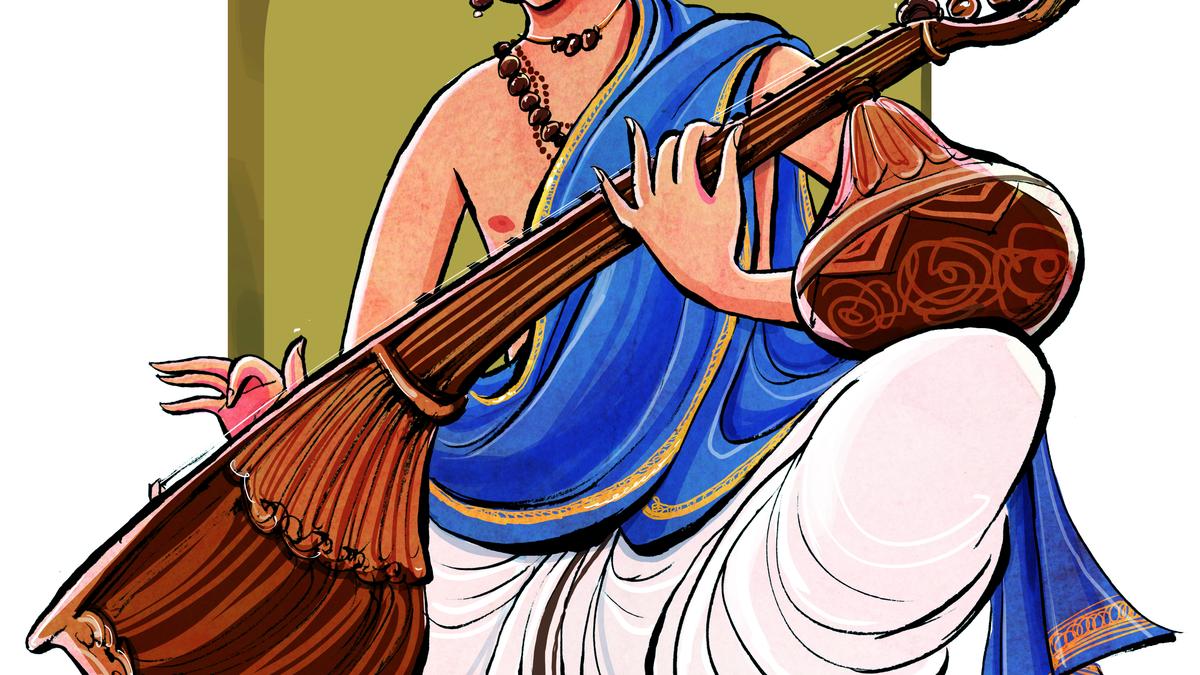
The eternal appeal of Muthuswami Dikshitar’s compositions
The Hindu
Going on Dikshitar’s trail on the composer’s 250th birth anniversary
The late 18th and early 19th centuries mark a golden dateline in the history of Carnatic music. The period witnessed the presence and the precious contributions of the illustrious Trinity of Carnatic music — Tyagaraja, Syama Sastri and Muthuswami Dikshitar.
Dikshitar, the youngest of the Trinity, was born in 1775. This year marks his 250th birth anniversary. Born to Ramaswami Dikshitar and Subbamma in the temple town of Tiruvarur, he was named after Lord Muthukumaraswami of Vaitheeswaran kovil.
At an early age, Muthuswami Dikshitar had mastered Vedic lore, treatises in Sanskrit, sangita shastra, astrology and medicine.
When Ramaswami Dikshitar and his family stayed at Manali (near Chennai), under the patronage of Manali Venkatakrishna Mudaliar, that Muthuswami Dikshitar had the opportunity to accompany his spiritual guru Chidambaranatha to Kashi. This trip facilitated his intense spiritual practice and his acquaintance with the musical ambience of northern India.
Back from Kashi, Dikshitar visited the Subrahmanya Swami temple at Tiruttani. It is said that the Lord appeared in the guise of an old man and put sugar candy into his mouth. It was then that he rendered his first musical creation in the raga Mayamalavagowla. Having considered Guha (Subrahmanya) as his guru, he adopted the mudra of Guruguha in his compositions. His first composition ‘Srinathadi Guruguho jayati’ is a wondrous amalgam of exquisite sahitya and sangita. The kriti is a tribute to the greatness of the guru. Musically, it incorporates, in a very subtle manner, glimpses of sarali varisai, janta varisai, alankarams and palindromic svara patterns.
Following the first kriti, Dikshitar composed seven more in the vibhakti theme (the eight case endings of Sanskrit grammar). In all these eight compositions, known as the Guruguha Vibhakti kritis, he elucidates the characteristics of an ideal guru. Dikshitar was a staunch advocate of Adi Sankara’s Advaita Vedanta. He also followed Adi Sankara’s Shanmata ideology, the worship of six prominent godheads — Ganapati, Kumara, Shiva, Shakti, Vishnu, and Surya. Traveling extensively in the Dravida land, Dikshitar dedicated several compositions to these deities at many kshetras.
Dikshitar mainly composed in Sanskrit with the exception of a few kritis in Telugu and Manipravalam. His compositions stand out for their lyrical excellence and musical flair. Significant details of each kshetra and its greatness are mentioned in his compositions. Prasa (alliteration) structures, Yati patterns, the interlacing of raga names, the inspirational takeaways from works of yore, the references from the esoteric to the tangible, along with the blissful unison with sangita make his compositions incredibly special.

 Run 3 Space | Play Space Running Game
Run 3 Space | Play Space Running Game Traffic Jam 3D | Online Racing Game
Traffic Jam 3D | Online Racing Game Duck Hunt | Play Old Classic Game
Duck Hunt | Play Old Classic Game











